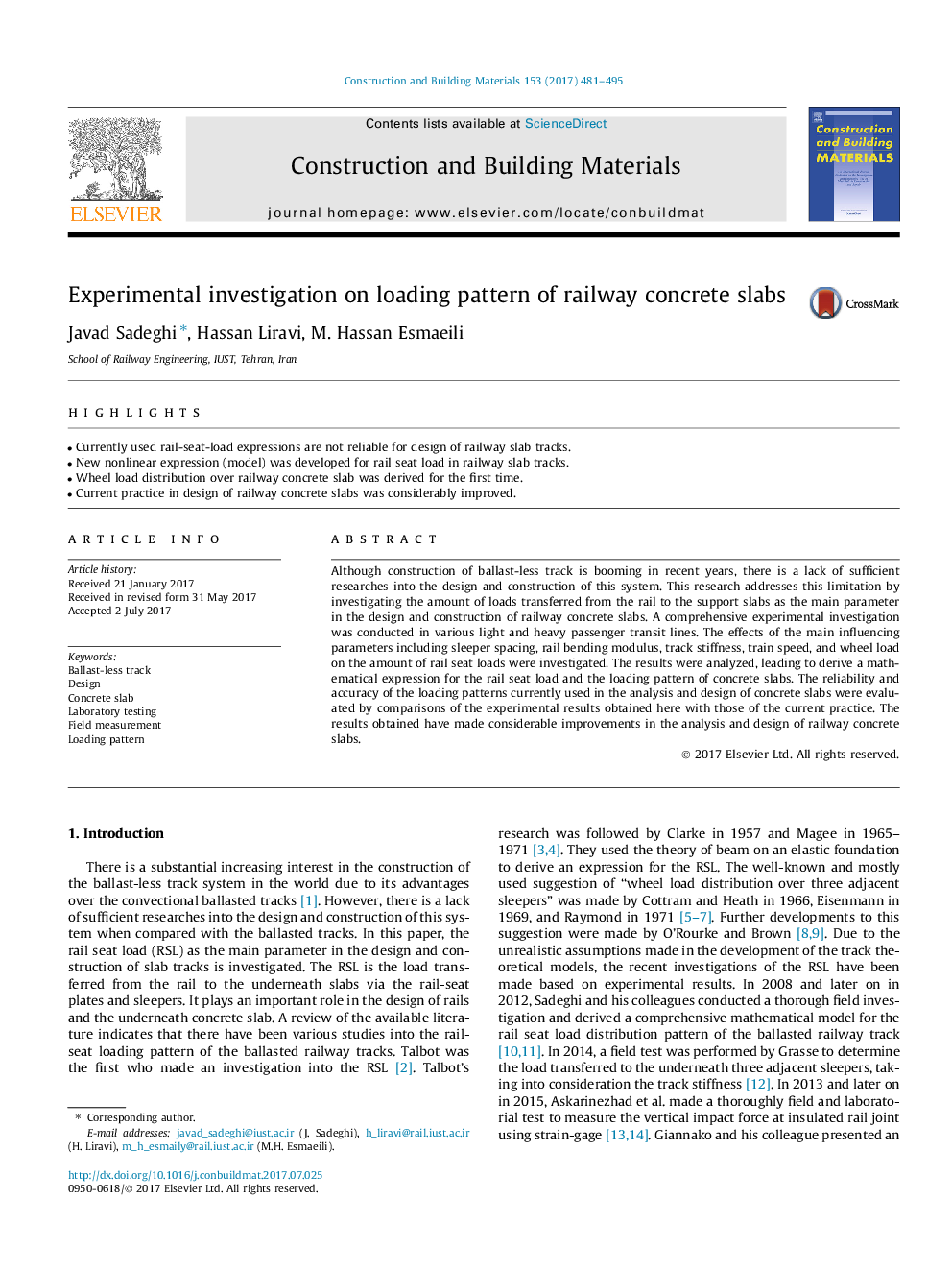| Article ID | Journal | Published Year | Pages | File Type |
|---|---|---|---|---|
| 4912994 | Construction and Building Materials | 2017 | 15 Pages |
Abstract
Although construction of ballast-less track is booming in recent years, there is a lack of sufficient researches into the design and construction of this system. This research addresses this limitation by investigating the amount of loads transferred from the rail to the support slabs as the main parameter in the design and construction of railway concrete slabs. A comprehensive experimental investigation was conducted in various light and heavy passenger transit lines. The effects of the main influencing parameters including sleeper spacing, rail bending modulus, track stiffness, train speed, and wheel load on the amount of rail seat loads were investigated. The results were analyzed, leading to derive a mathematical expression for the rail seat load and the loading pattern of concrete slabs. The reliability and accuracy of the loading patterns currently used in the analysis and design of concrete slabs were evaluated by comparisons of the experimental results obtained here with those of the current practice. The results obtained have made considerable improvements in the analysis and design of railway concrete slabs.
Related Topics
Physical Sciences and Engineering
Engineering
Civil and Structural Engineering
Authors
Javad Sadeghi, Hassan Liravi, M. Hassan Esmaeili,
